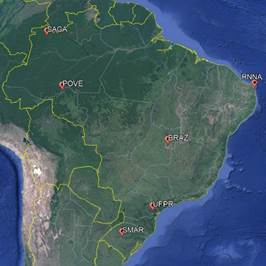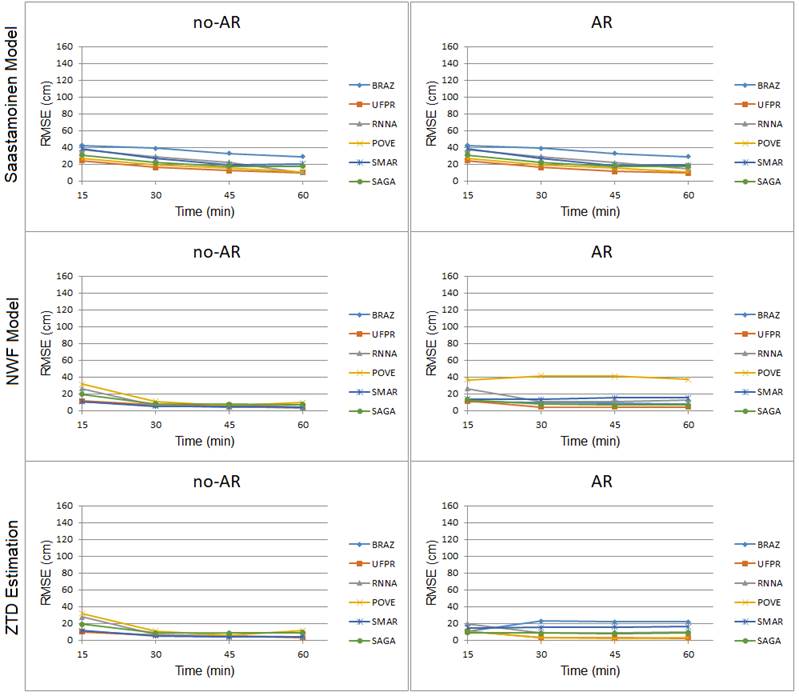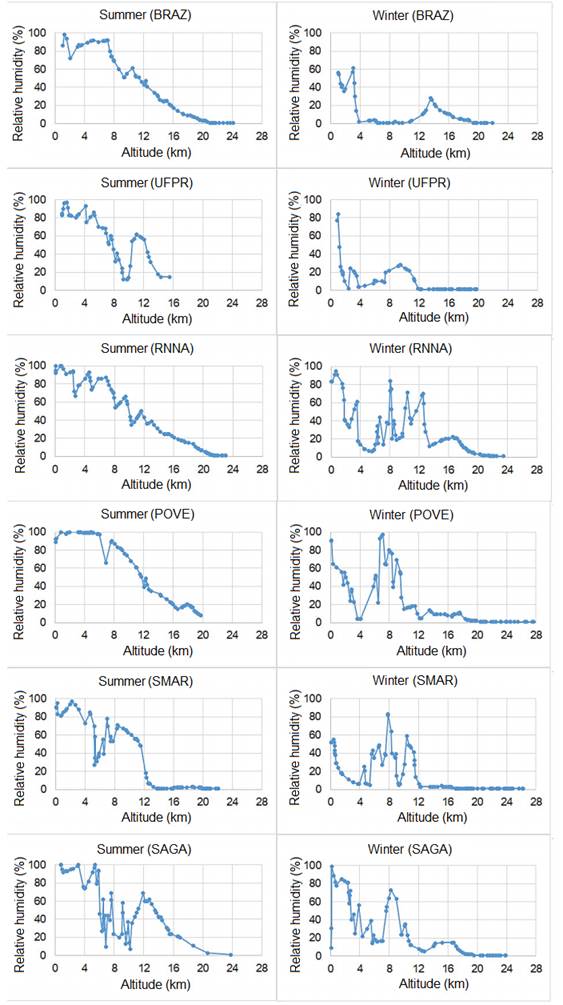Abstract:
In the Global Navigation Satellite System (GNSS), ambiguity resolution (AR) can shorten observation time and increase the positioning quality. The correct tropospheric modeling is intrinsically related to the ability to perform AR. Here, we assessed the influence of different tropospheric correction alternatives on AR for static Precise Point Positioning (PPP) in Brazilian territory. Our goal was to provide directions to users when choosing a suitable tropospheric model for application in PPP-AR under Brazilian atmospheric conditions. Thus, this study was carried out using well-known models such as the Saastamoinen model and the Zenith Tropospheric Delay (ZTD) Estimation and Numerical Weather Prediction (NWP) model from CPTEC/INPE. Six GNSS stations from the Brazilian Network for Continuous Monitoring (RBMC) (BRAZ, UFPR, RNNA, POVE, SMAR, and SAGA) were selected. Different GNSS processing setups were considered for GNSS data registered at selected stations during summer and winter. The assessment was based on a statistical analysis of positioning accuracy during one-hour sessions. The results indicated that such as the ZTD Estimation, the NWP model provides an accuracy of a few centimeters. On the other hand, the Saastamoinen model provided decimeter level accuracy, thus it is not the recommended choice for PPP-AR in the experimental conditions.
Keywords:
Precise Point Positioning; Tropospheric modeling; Ambiguity resolution; Numerical Weather Prediction Model

 Thumbnail
Thumbnail
 Thumbnail
Thumbnail
 Thumbnail
Thumbnail
 Thumbnail
Thumbnail
 Thumbnail
Thumbnail
 Thumbnail
Thumbnail
 Thumbnail
Thumbnail
 Source: Google Earth (2019).
Source: Google Earth (2019).





